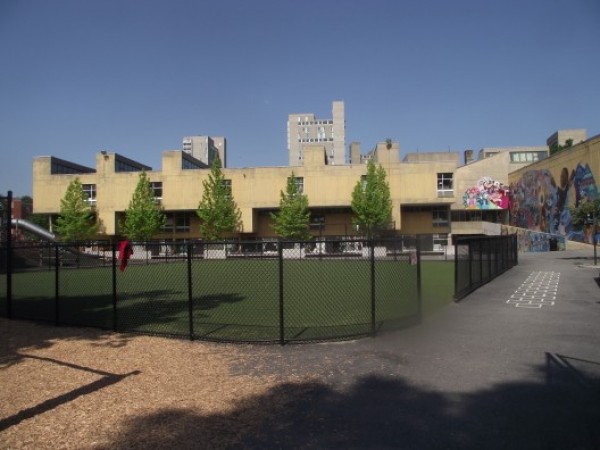The subject of green building is rife with contradiction. Sure, LEED-certified structures consume less energy than those simply built to code. But constructing a building of almost any sort tends to be an energy-intensive process, and even a home built to cut its carbon emissions by 50 percent still carries more eco-guilt than, say, the average family car. (According to the U.S. Department of Energy, the average American home produces 27,300 pounds of CO2 emissions on an annual basis, as compared to the 12,100 pounds CO2 produced by the average automobile.) Not to mention those giant eco-mansions that actually consume more resources than conventionally built homes built to a smaller scale.
Nowhere is the contradiction more apparent than in the case of demolition: is it really environmentally conscious to tear down an old (but still functional) structure to make way for a new green one?

That’s the controversy currently dogging the proposed demolition of the Martin Luther King Elementary School in Cambridge, Mass. Architizer reports that local residents are questioning a proposal to demolish this essentially sound school building to replace it with a new “green” one. The current building was designed by Catalan architect Josep Lluis Sert, and compliments the many other buildings in Cambridge he worked on during the years he taught at Harvard (including the Peabody Terrace Graduate Housing complex just across the street).
The proposed new building would serve grades K to 8th with all the green bells and whistles: natural daylighting in classrooms, high efficiency mechanical and electrical systems and efficient insulation. The architects who would be designing the new building, Perkins Eastman, aim to have this new school building produce as much energy as it consumes on an annual basis — i.e., to achieve net zero status. Which, it must be said, is pretty darn green.
A recent study from Preservation Green Lab: National Trust for Historic Preservation took a look at the lifetime cycle of buildings and their effect the environment. This comparative study assessed the performance of preserved and rehabilitated buildings as compared to new ones with up to date technology built to green standards. Using the widely accepted tool of Life Cycle Assessment (LCA), the study found that the reuse and retrofit of buildings of equivalent size and functionality can, in most cases, be more ecologically friendly than constructing a new one.
Citing numerous case studies, the data shows that even with a new building that’s 30 percent more efficient than an existing one, it can take between 10 and 80 years for a new, energy efficient building to overcome the climate change impacts that were created during that new building’s construction. If the new school building in Cambridge were, in fact, constructed to net zero standards, those impacts would be overcome significantly more quickly — but the LCA costs of renewable energy tech (such as solar panels) would have to be factored in as well, which could potentially shift the equation in the direction of retrofitting.
In Cambridge, it remains to be seen whether those numbers will be cited in deciding whether to tear down or retrofit King Elementary, but community members, alongside Docomomo US/New England, have gathered to fight back against this building’s demolition, and the next few months should delve a verdict, one way or the other.